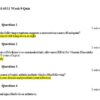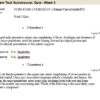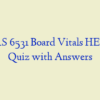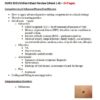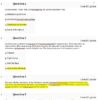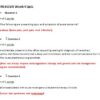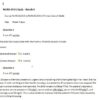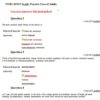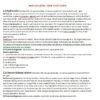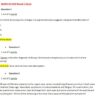Description
NURS 6531 Week 4 Quiz
- Which of the following physical disorders are associated with obesity?
- American Heart Association’s goals to promote ideal cardiovascular health in women include which of the following?
- Which of the following best describes hypertrophic cardiomyopathy?
- A 58-year-old female presents to the office complaining about heaviness in both legs. She works at a local department store and complains of discomfort when standing. She states that her mother had similar problems with her legs. Physical exam findings reveal no varicosities or edema. The nurse practitioner suspects which of the following in the differential diagnosis?
- Diastolic murmurs are caused by regurgitation across the:
- Which of the following patient symptoms is consistent with an acute myocardial infarction?
- A patient presents to urgent care complaining of dyspnea, fatigue, and lower extremity edema. The echocardiogram reveals and ejection fraction of 38%. The nurse practitioner knows that these findings are consistent with:
- Which of the following is not a risk factor for development of an abdominal aortic aneurysm?
- An 88-year-old female presents complaining of “liquid” draining from her leg. She denies pain or injury. The physical exam reveals an irregularly shaped shallow ulceration on the posterior left lower extremity above the ankle. An area of warmth and erythema surround the lesion. The nurse practitioner suspects:
- Unna boot paste should not be used for:
- Important education for patients with moderate or severe aortic stenosis includes:
- Risk factors for acute arterial insufficiency include which of the following?
- Which of the following is not a lifestyle risk factor associated with hypertension?
- Complications associated with acute myelogenous leukemia therapy include:
- Which of the following are presenting signs and symptoms of acute leukemia?
- A 28-year-old female presents to the office requesting testing for diagnosis of hereditary thrombophilia. Her father recently had a deep vein thrombosis and she is concerned about her risk factors. The nurse practitioner explains that:
- The most important component of the work-up for a patient who presents complaining of a bleeding problem is:
- Which of the following is the most common complication of the myelodysplastic syndromes?
- Prolonged PT suggests:
- A: Reed-Sternberg Cells seen in patients with Hodgkins



